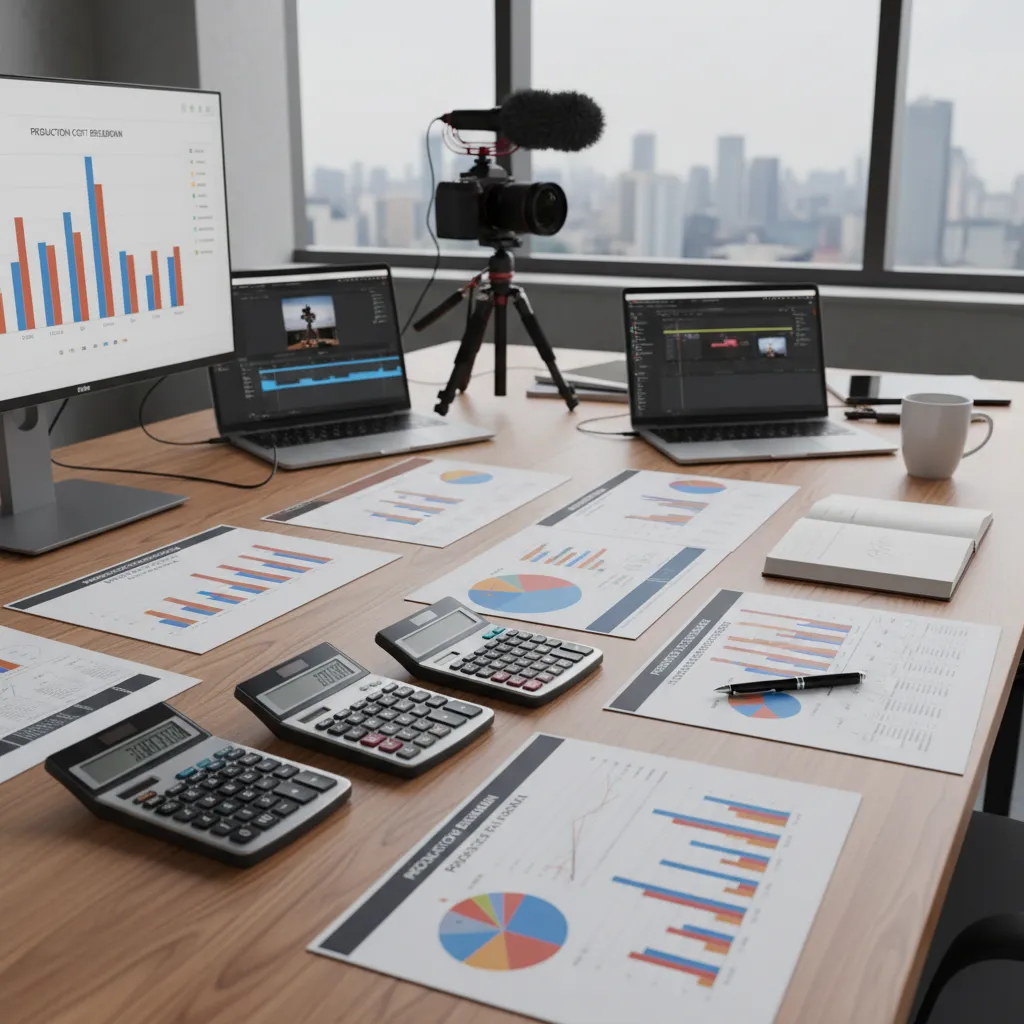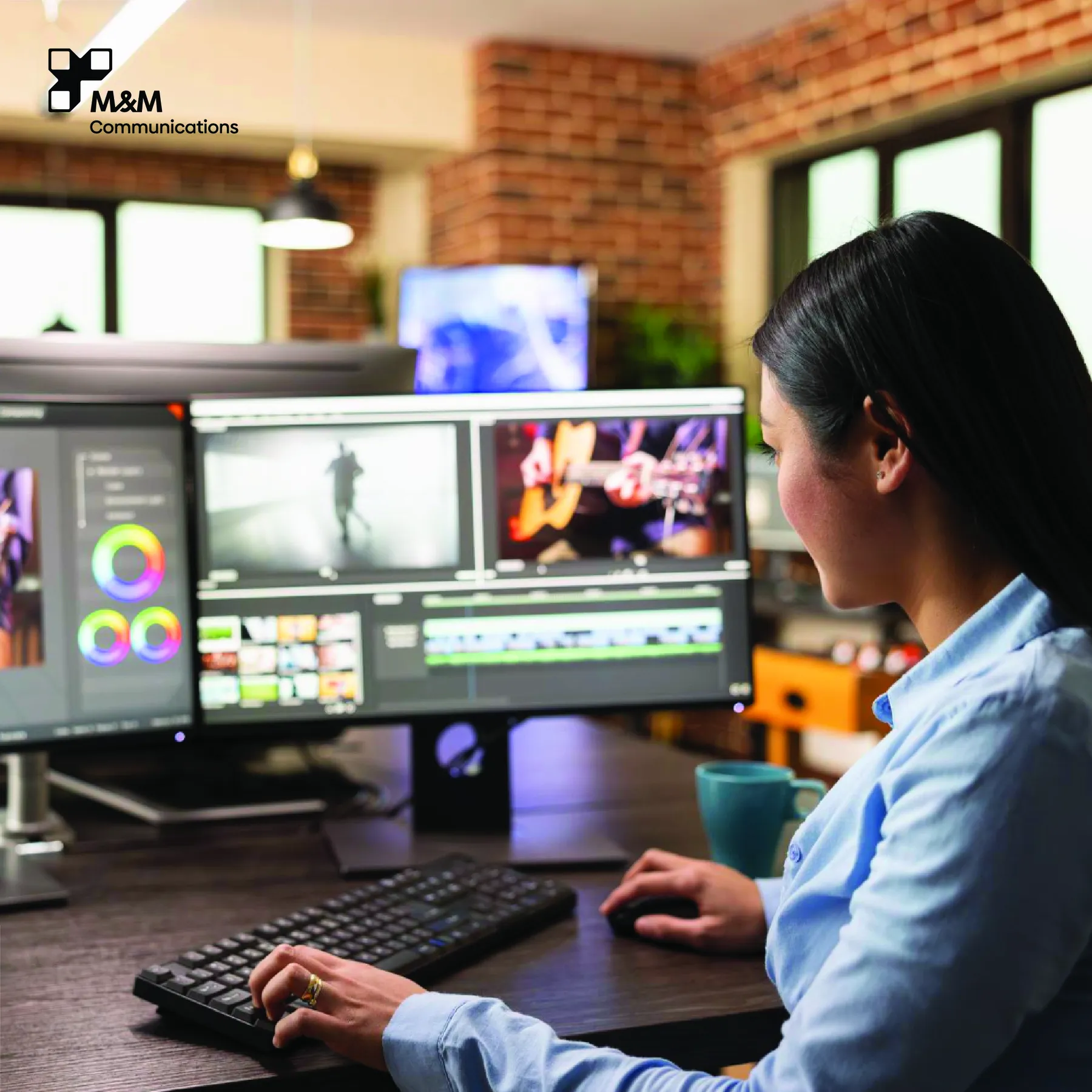
Video Production Budget Planning: Cost-Effective Strategies for Professional Content Creation
Strategic Budget Planning for Sustainable Video Production Excellence
Effective video production budget planning determines the difference between sustainable content creation and financial strain, enabling businesses to produce professional video content consistently while maintaining fiscal responsibility and strategic growth. At M&M Communications, we've managed video production budgets across diverse scales—from startup initiatives to enterprise campaigns—understanding that successful budget planning isn't just about cost control—it's about creating inspirational and magical content experiences that deliver exceptional value while building sustainable production capabilities for long-term business success.
Understanding Video Production Cost Fundamentals
Video production costs extend far beyond equipment and talent, encompassing pre-production planning, production execution, post-production workflow, and distribution strategy, each requiring strategic allocation for optimal results.
The most effective budget planning balances immediate production needs with long-term capability building, ensuring current investments support sustainable content creation while building infrastructure for future growth and creative evolution.
Professional budget planning also considers hidden costs including equipment maintenance, software licensing, storage requirements, and talent development that affect total cost of ownership and long-term production sustainability.
Budget Framework by Production Scale
Micro-Budget Productions: $1,000-5,000 per Project
Micro-budget productions focus on essential elements while maximizing creative impact through strategic resource allocation and efficient workflow design.
Equipment Allocation (40% of budget): Camera rental or purchase, basic lighting kit, essential audio equipment, and foundational accessories for professional quality achievement.
Talent and Crew (30% of budget): Essential personnel including videographer, basic crew support, and talent compensation for professional execution standards.
Production Support (20% of budget): Location costs, catering, transportation, and production insurance for smooth operational execution.
Post-Production (10% of budget): Basic editing, color correction, audio mixing, and final delivery preparation for professional content completion.
Small-Scale Productions: $10,000-25,000 per Project
Small-scale productions enable enhanced creative flexibility and professional polish while maintaining cost-effective resource utilization.
Enhanced Equipment Package (35% of budget): Professional camera systems, comprehensive lighting design, advanced audio solutions, and specialized accessories for creative control.
Professional Crew (35% of budget): Director, cinematographer, audio engineer, and support crew for efficient, professional production execution.
Production Infrastructure (20% of budget): Location fees, craft services, equipment transportation, permits, and comprehensive production insurance.
Advanced Post-Production (10% of budget): Professional editing, color grading, sound design, motion graphics, and delivery across multiple formats.
Mid-Range Productions: $50,000-100,000 per Project
Mid-range productions provide broadcast-quality capabilities with comprehensive creative control and professional production values.
Professional Equipment Systems (30% of budget): Multiple camera setups, advanced lighting packages, professional audio systems, and specialized equipment for creative requirements.
Experienced Production Team (40% of budget): Full production crew including director, producer, cinematographer, audio team, and specialized positions for complex production demands.
Comprehensive Production Support (20% of budget): Premium locations, full catering, transportation, permits, insurance, and contingency planning for professional execution.
Professional Post-Production (10% of budget): Full post-production workflow including editing, color grading, sound design, visual effects, and comprehensive delivery package.
Cost Category Analysis and Optimization
Pre-Production Investment Strategy
Allocate 15-20% of total budget to pre-production planning, script development, location scouting, and production design that prevent costly problems and enable efficient production execution.
Invest in comprehensive planning including storyboard development, shot lists, equipment testing, and crew preparation that minimize production time while maximizing creative results.
Include contingency planning and risk assessment that identify potential problems and prepare solutions, protecting budget integrity while ensuring production success.
Equipment Cost Management
Balance equipment rental versus purchase based on usage frequency, storage capabilities, and long-term production plans rather than project-specific requirements alone.
Consider equipment bundling and package deals that provide comprehensive solutions while reducing individual item costs and simplifying logistics management.
Evaluate insurance requirements and equipment protection that safeguard investment while enabling confident equipment utilization in diverse production environments.
Talent and Crew Optimization
Develop relationships with reliable, skilled crew members who understand your production style and quality standards, enabling efficient collaboration while reducing training and communication overhead.
Plan talent compensation strategies that balance budget constraints with professional standards, ensuring quality performance while maintaining sustainable production economics.
Consider skill development investment for core team members that builds internal capabilities while reducing long-term dependency on external contractors.
Revenue Modeling and ROI Calculation
Content Value Assessment
Calculate expected content value based on usage duration, audience reach, conversion potential, and brand value enhancement rather than production cost alone.
Consider content repurposing opportunities and multi-platform distribution that maximize production investment value through extended usage and audience reach.
Evaluate content shelf life and evergreen potential that affects long-term value creation and return on production investment.
Budget Efficiency Metrics
Track cost-per-minute of finished content, ensuring production efficiency improvements over time through workflow optimization and experience development.
Monitor equipment utilization rates and crew efficiency metrics that identify optimization opportunities while maintaining quality standards.
Measure client satisfaction and project success rates that indicate effective budget allocation and production value creation.
This approach reflects M&M Communications' philosophy: we don't recommend expensive productions to demonstrate capabilities or justify higher fees. Instead, we help businesses create inspirational and magical content that delivers exceptional value while building sustainable production capabilities through strategic budget planning and efficient resource utilization.
Vendor Management and Cost Control
Strategic Vendor Relationships
Develop long-term relationships with equipment suppliers, location providers, and service vendors that enable preferential pricing while ensuring reliable service quality.
Negotiate volume discounts and loyalty programs that reduce per-project costs while maintaining consistent vendor quality and reliability standards.
Create backup vendor networks that prevent production delays while providing competitive pricing options for different project requirements and budget constraints.
Contract Negotiation Strategies
Structure contracts with clear deliverables, timeline requirements, and change order procedures that prevent scope creep while maintaining production flexibility.
Include force majeure clauses and contingency planning that protect budget integrity during unforeseen circumstances or production challenges.
Negotiate payment terms that align with cash flow requirements while providing vendor security and maintaining positive business relationships.
Technology Investment and Depreciation
Equipment Lifecycle Management
Plan equipment purchase timing that balances technology advancement with depreciation schedules, maximizing equipment value while maintaining technological competitiveness.
Consider leasing options for expensive equipment that enable access to latest technology while reducing capital investment and maintenance responsibilities.
Evaluate used equipment markets and certified refurbished options that provide professional capabilities at reduced costs while maintaining reliability standards.
Software and Licensing Strategy
Budget for comprehensive software licensing including editing software, plugins, stock media, and cloud services that enable professional post-production capabilities.
Consider subscription versus purchase options based on usage patterns and upgrade requirements that optimize long-term software investment value.
Plan for software training and certification that maximizes software investment value while building team capabilities and production efficiency.
Contingency Planning and Risk Management
Budget Contingency Allocation
Allocate 10-15% of total budget for contingency planning that addresses equipment failures, weather delays, talent changes, and other unforeseen production challenges.
Create tiered contingency plans that address different problem scales while maintaining production quality and timeline commitments.
Establish emergency procedures and backup resources that enable production continuation during challenging circumstances without excessive cost escalation.
Insurance and Protection Strategies
Obtain comprehensive production insurance including equipment coverage, liability protection, and completion bonds that protect financial investment while enabling confident production execution.
Consider weather insurance and location-specific coverage that protects against circumstances beyond production control while maintaining budget predictability.
Include equipment rental insurance and damage protection that prevents unexpected costs while enabling confident equipment utilization in diverse production environments.
Scaling Strategies and Growth Planning
Incremental Capability Building
Plan equipment and capability acquisition that builds production capabilities incrementally while maintaining budget sustainability and operational efficiency.
Consider modular equipment systems that enable capability expansion without requiring complete system replacement or overwhelming capital investment.
Develop skill progression plans that build internal capabilities while reducing dependency on external contractors and improving long-term production economics.
Revenue Diversification and Sustainability
Create multiple revenue streams from video production capabilities including client services, content licensing, template creation, and training programs that diversify income while building sustainable business models.
Consider content syndication and licensing opportunities that extend content value beyond initial production while creating ongoing revenue streams from existing content investments.
Develop partnership opportunities with complementary service providers that expand service offerings while sharing costs and reducing individual business risk.
Performance Measurement and Optimization
Budget Performance Analytics
Track actual costs versus budget projections across all production categories, identifying trends and optimization opportunities for future project planning.
Monitor production efficiency metrics including time-to-completion, revision cycles, and client satisfaction that indicate effective budget allocation and production management.
Analyze return on investment across different content types and production approaches that inform future budget allocation and strategic planning decisions.
Continuous Improvement Systems
Implement post-project review processes that capture lessons learned and optimization opportunities for future production budget planning and execution.
Create standardized cost tracking and reporting systems that enable accurate budget forecasting while identifying efficiency improvement opportunities.
Develop budget templates and planning tools that streamline future project planning while incorporating accumulated experience and best practices.
Industry Trends and Future Considerations
Technology Cost Evolution
Monitor equipment cost trends and technology advancement cycles that affect equipment investment timing and depreciation planning.
Market Rate Changes
Track talent and crew rate evolution that affects budget planning while maintaining competitive compensation and quality team assembly.
Conclusion: Building Sustainable Production Economics
Effective video production budget planning enables consistent, high-quality content creation while building sustainable business capabilities and long-term competitive advantages through strategic resource allocation and efficient operations.
At M&M Communications, we understand that exceptional budget planning isn't about minimizing costs—it's about maximizing value creation through strategic investment in capabilities, relationships, and systems that enable inspirational and magical content creation while supporting sustainable business growth and creative excellence.
The future belongs to businesses that can balance creative ambition with fiscal responsibility, creating outstanding content while building sustainable production capabilities. Plan budgets strategically, invest in long-term capabilities, and discover how effective budget management can transform your video production potential and business success.






